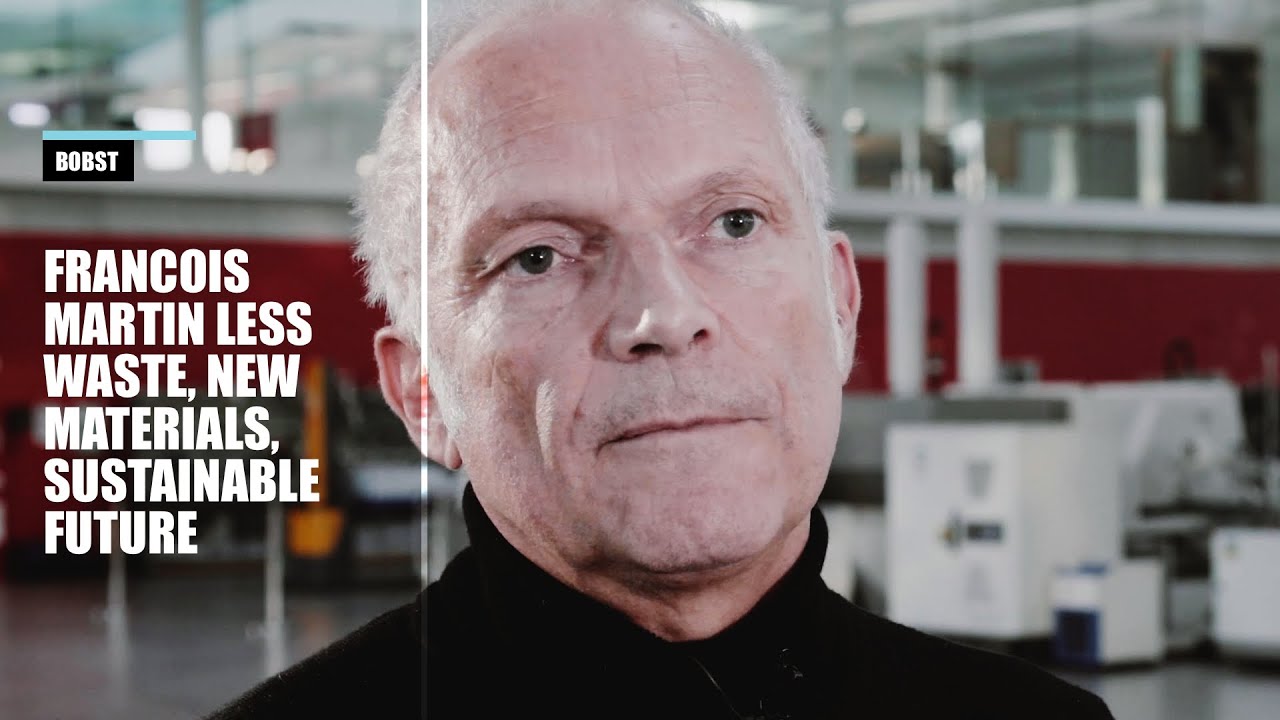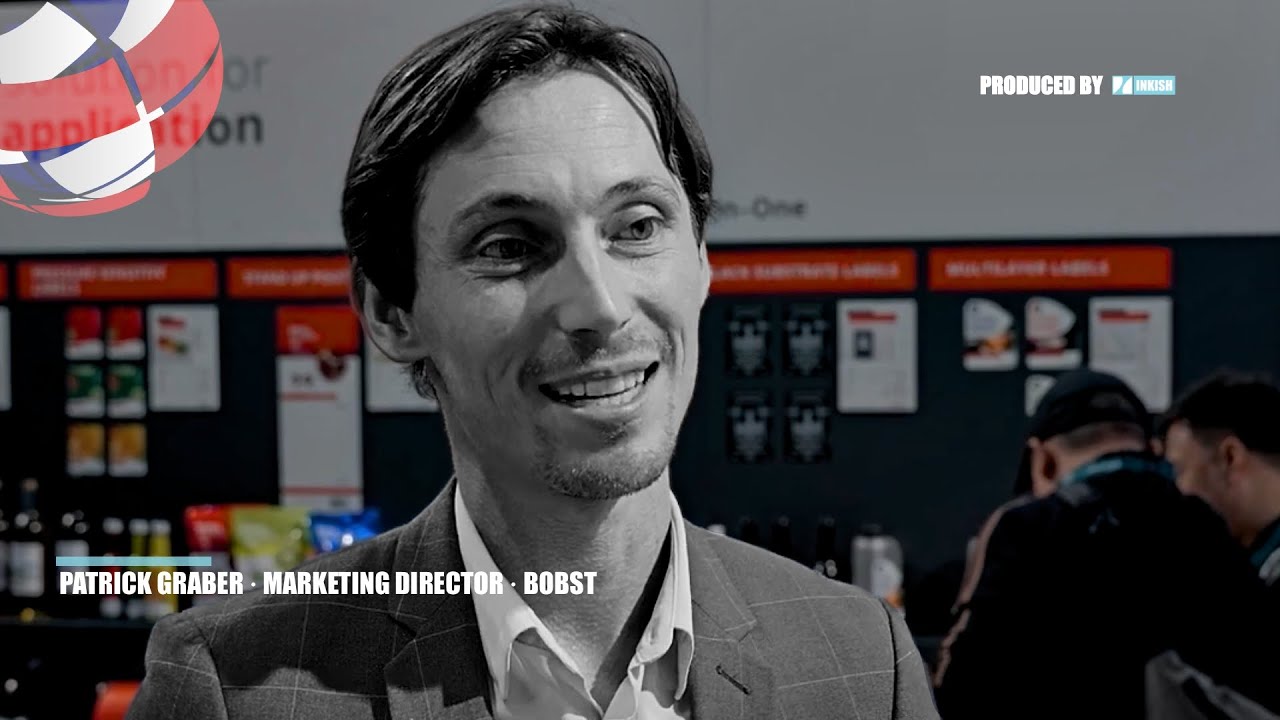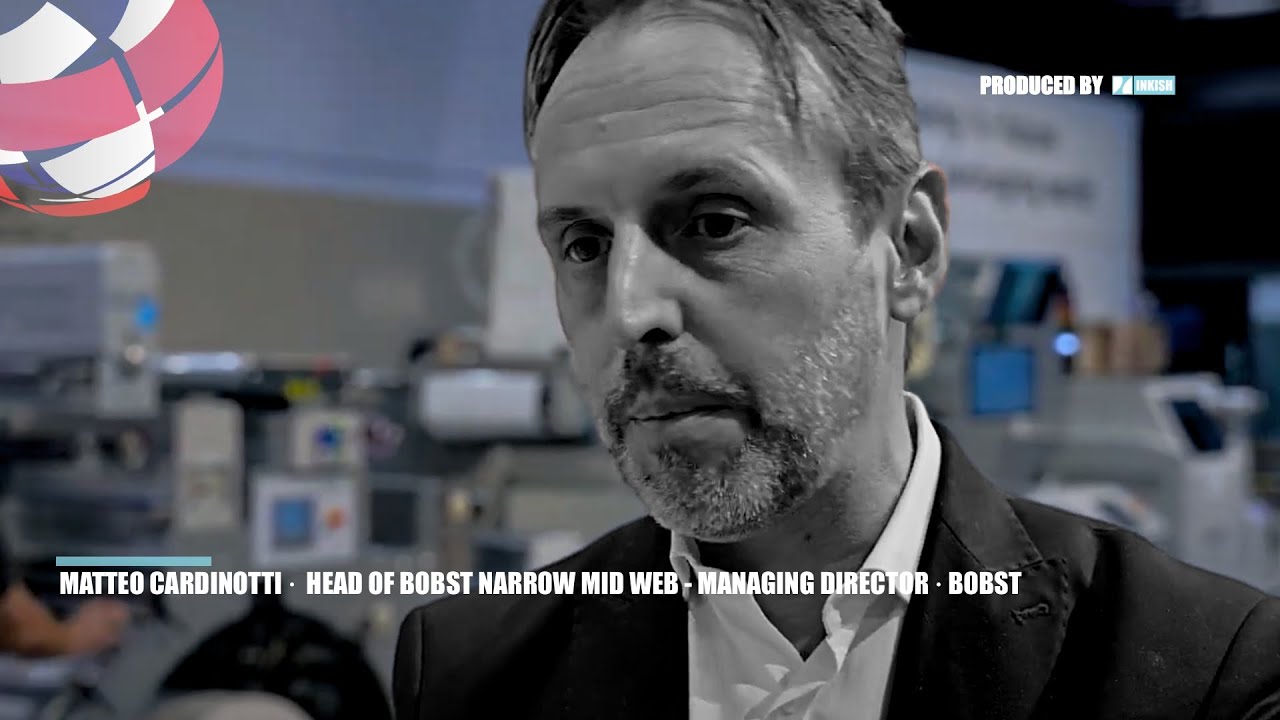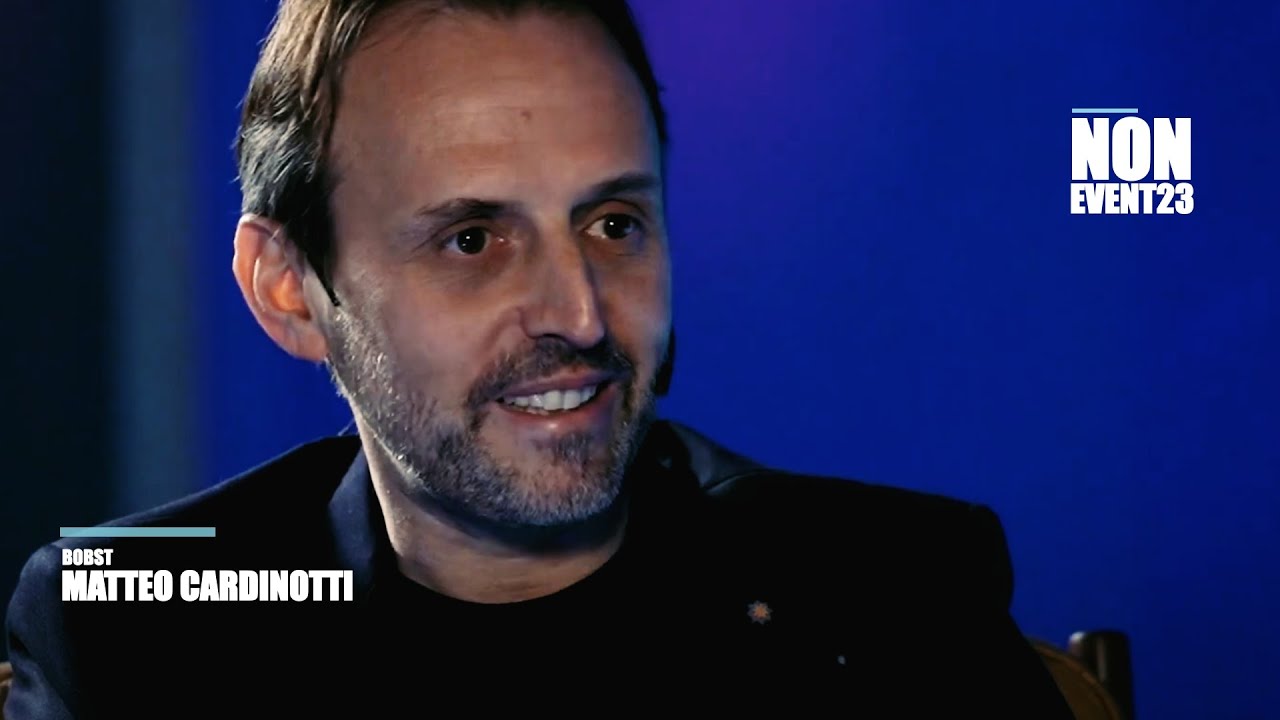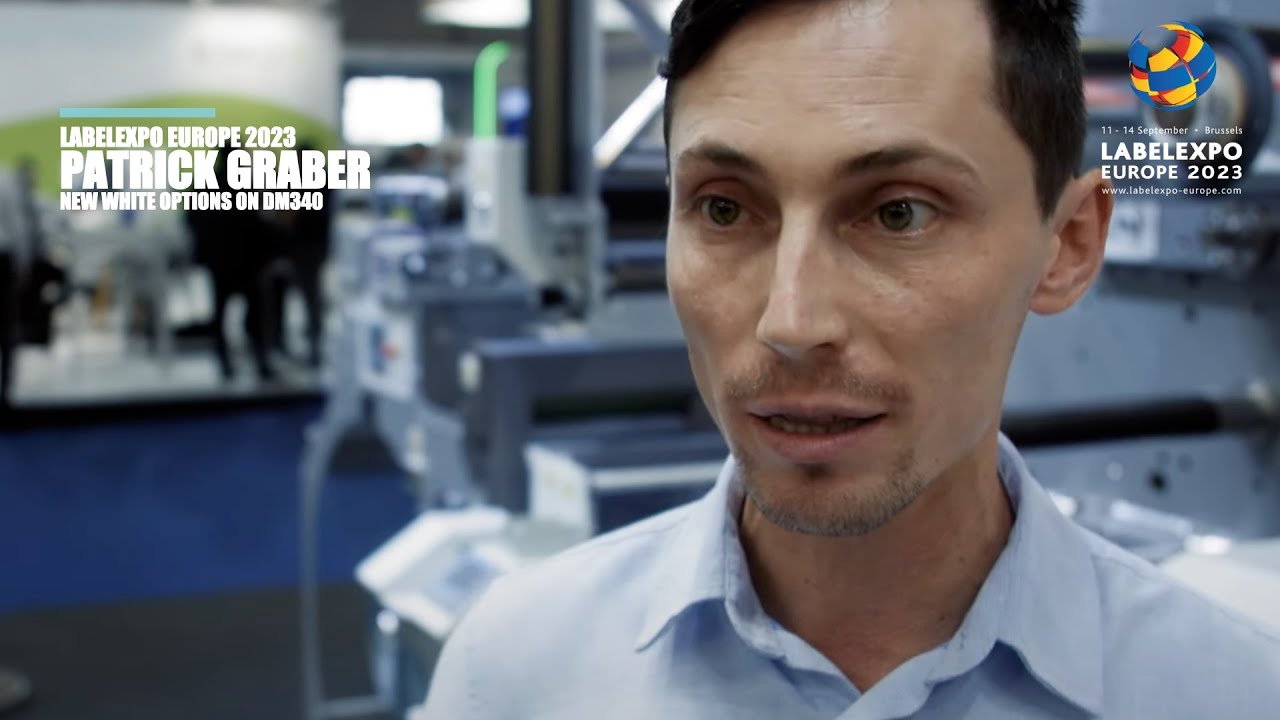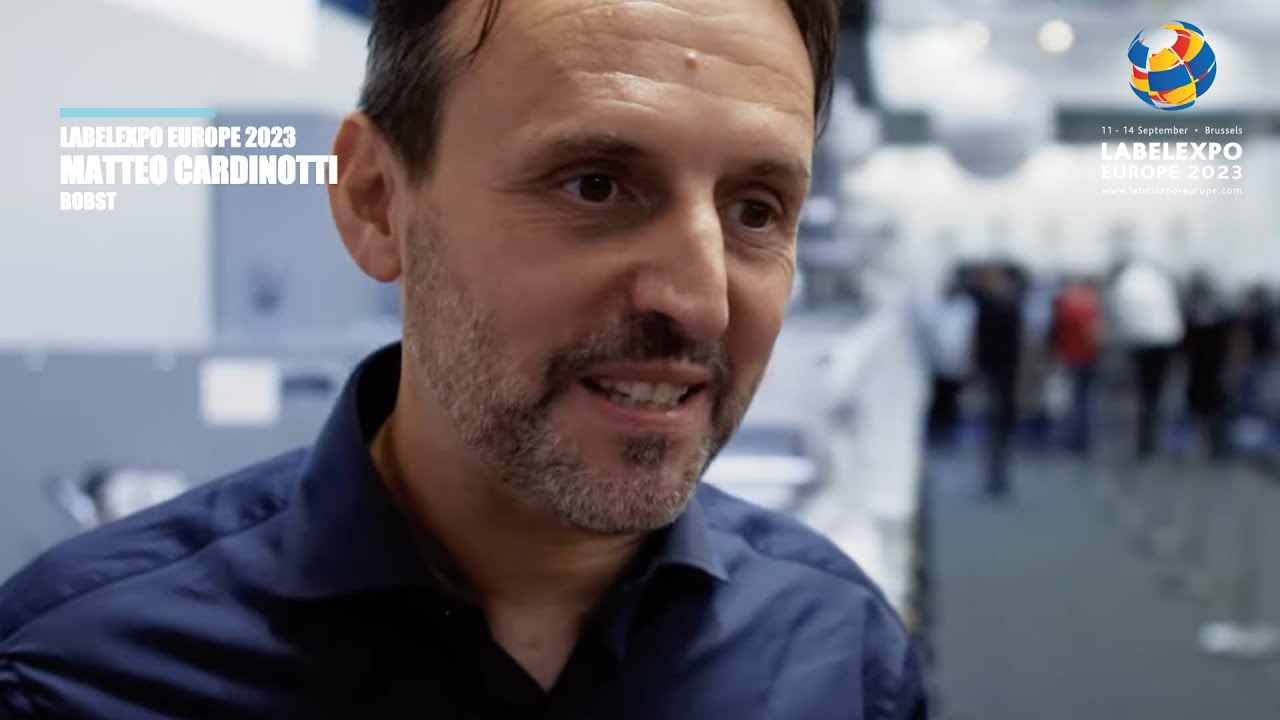Less Waste, New Materials, Sustainable Future · Francois Martin · BOBST
BOBST is focusing on less waste, new materials, and a sustainable future. In this film, BOBST Groups, Francois Martin takes us through some of the agendas that in the companies mind will take BOBST to the next level! In this film, you will get an insight like not seen before – at least not through the eyes of INKISH. We love the openness that more and more vendors have, and we totally believe in this agenda. Dig into this film and enjoy!
So sustainability, typically when people are thinking about it, they are jumping into plastic. So plastic is today seen as the enemy 40% of the plastic production worldwide comes from packaging. So that’s the fact. So what we are doing at BOBST, we are working with partners to develop new solutions that we call mono material for higher, or we say capability.
So we want to give the brand owners the capacity to bring to the market recyclable packages. And we are also working on processing thinner substrates, to reduce waste, and to reduce the amount of plastic produced. So some of the plastic can really be reduced. Not everything would disappear because for some goods, plastic is the only way to pack them properly.
So that’s one direction that we are implementing in sustainability. The second one is everything that we raised to waste overall. It could be carton, it could be plastic. So we are designing machines to generate the best quality throughout the production chain. Meaning that when we are delivering packages to brand owners on to the packers
typically they have good boxes. So when they are doing the packing, they don’t have that boxes where it is not glued properly, or it is not folded the way it should be. So by doing that, we are reducing waste just by delivering great quality. And this is a synonym for Bobst. And the last thing that we are working on now, that’s quite important.
We are designing machines that you can upgrade. Throughout their entire life, meaning that if you have a specific, let’s say die-cutter and you want now to embark with the new tooling that we just released, it can be done. So we are preserving the lifespan of the machines with what we call a upgrade kits or retrofit.
So these are the three dimensions that we are looking at. Better production of plastic with material. Less waste, better quality of what is produced on the BOBST machines and upgrades of the machines themselves.
So we have regular engagements with the brand owners. They are the ones purchasing packaging at the end and the brand owners. If we want to summarize their key challenges. In fact, you have, they are all looking at quality at the right cost. So this is still a very strong request from them, specifically quality, as I told you before, they want to be sure that when they receive boxes, they can be packed and the consumer will have the right consumer experience.
So the printing quality is important, but also the opening, the closing and the recycling. So that’s one element. The second element for the brand owners is agility. So agility is something that they need to do to be able to bring to the market products faster. So they need to react to consumer trends, consumer needs, and it should not take them 18 months to release a new box, but they want to do it in a 12 month or six month or even three months.
So they are asking us to design machines where we can very easily change the type of box we are producing. Improve the entire workflow. And the last one is sustainability. So sustainability for brand owners is very important and they are asking us to develop new plastics that can be recycled much easier.
So also boxes that can take any shape specifically for e-commerce or brand owners are going into e-commerce and they want us to deliver boxes, taking almost any shape to not ship air. And they want also has to deliver boxes that have a good quality so that the goods are protected properly. So that’s in short the challenges of the brand owners and we are designing our machines, but also the processes to support these needs.
So my advice to the converters would be to be careful when they look at names like smart factory or packaging 4.0, the concepts are right, but the execution is going to be more complicated than it looks like. And why? Because the biggest challenge for converters in 2020, it is not to buy machines.
That’s easy to do. You call BOBST. You want a new machine. We sell it to you. The challenge is to have the right people using the the machines are going to be more connected, more digitalized, more automated, and to operate these machines, you need to have the right staffing. So my recommendation is really to tell converters hire new people, able to deal with workflow solutions, able to deal with world.
So that’s the first one. The second recommendation is look at digital printing and converting. Because this is going to happen. So packaging is not isolated. Everything that can become digital will. In labels we have seen it. So the label production, 30% of all the label produced in the world are already digital.
And it’s going to be 50% by 2025. So folding cotton will follow flexible packaging and corrugated. So you need to stop thinking in your own company how you are going to embark the digital journey. And I can tell you it’s more complicated than to buy a press. And the third element is really to look at how you engage with your customers, to digitalize the workflow, the communication with the ones where you buy ink and substrate with your clients, the Packers you are shipping the goods to, you need to make sure that the entire line
is well integrated. So these are the few advice I would give to converters.
BOBST connect. It’s going to be the backbone. It’s a platform. It’s a software and application platform that will orchestrate the entire packaging production and BOBST connect is going to be very important for all the converters to connect all their machines, to integrate the digitalization of the workflow, to receive data from the machines and to enhance the overall productivity and the quality of what did you and the, just behind you, we have a digital inspection table.
So this is something that is part of BOBST Connect. This is going to help us in quality control systems, inspection systems managing a the quality in every single step of the production process. So BOBST Connect is going to be fundamental. Now, digital printing BOBST has created its own a technology with the Samba print heads.
So we just purchased the heads. We have created the additional elements around it, production of the ink and the software and the ink writing mechanism. We have integrated these new print heads into the label press. And now we are in the ramp-up phase. So we are now selling machines weeks after weeks. We have new clients that are discovering that digital is helping them to do what they could not do before.
And in labels, we are all aware that we need to deal with more short runs. We need to customize labels for brand owners. And we need to print cost effectively. So what is unique with the BOBST technology is that you get great quality. I will say like the others, but what you get, it is high productivity and the right economics.
And the last 20 years, I was always preaching the same to have a good solution to work. You need to have the right quality, the right productivity and the right economics, but you need to multiply these three things. So now at BOBST the next sentence solution for label production and that’s solution. We need the future expand into flexible packaging into folding carton , into corrugated to take some time.
So the BOBST vision, it is built for the next five to ten years. So now we are very clear. We have it very clear. It’s all to be around connectivity. We talked about it, digitalization, including digital printing and converting automation, including quality control systems. And then all of that will deliver a sustainable quality.
And this is what we all want.
So we have solutions in our factory in Italy, we have today a rotary die-cutter , but we are also looking at having digital label cutting solutions, because we believe that the entire label production chain should be digitalized from the PDF to the final labels. So that’s what customers want. And he, and they also want the same for folding carton boxes, tweak take some time, but this is the kind of vision, for the future.






























































